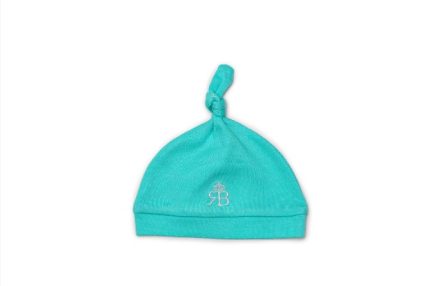Your Growing Baby
At 3 months old, your baby has gained more than 30 percent of their body weight and increased by 20 percent in length. Your baby will continue to make enormous strides, especially over the next three months.
Developmental Milestones
Many experts call the first 12 weeks after a baby is born the “fourth trimester” because there is so much growth still happening in that time period. With all that development, your little one may have gone through some serious growing pains, but as you round the corner into this month, you should notice a lot of new changes in your baby. The evening fussiness will start to subside and your baby may start to be a happier, more smiley little one. Here are some of the developmental milestones that you can expect to see.
Body
Thumb or finger sucking: Many babies begin to suck their thumbs or fingers around this time because it’s the age when they really “discover” their hands. At 3 months old, babies are able to keep their hands close to their mouths more consistently and they may be fascinated by chewing on their fingers or find comfort in sucking their thumbs.
Scent recognition: Your baby can definitely recognize a caregiver’s primary scent. While this skill was present at birth, your baby has it down to a science now.
Texture preference: By 3 months, your little one will have preferences, and even strong responses, to touches and textures they find soothing or uncomfortable.
Hold the head up more: Your baby should be able to hold their head up at a 90-degree angle beginning at 12 weeks.
Sit with support: When you hold your baby on your lap, for example, they should be able to sit up and hold their head fairly steady.
Bear weight on their legs: You will notice that your doctor tests this skill at the office during well-visit check-ups, but you can check it yourself at home by holding your baby up to a “standing” position.
Lift the chest up: During tummy time, your little one will begin to lift their torso up with the arms.
Brain
Increased vision: Although your baby still doesn’t have any depth perception (they can’t judge how far away or how close objects are), they can recognize objects 8 to 15 inches away very clearly.
Increased hearing clarity: Your baby should turn toward loud noises and begin to imitate speech sounds.
Begin to grasp: Your baby may use both hands to clasp an object, like a rattle or toy.
Follow objects: While your baby may have started tracking objects with his eyes in previous weeks, they should be able to follow objects through a full 180-degree angle now.
Focus the eyes: Up to this point, it’s been normal for babies to have some trouble focusing their eyes. You may have noticed your baby looking “cross-eyed,” especially when trying to focus on an object close in front of their face. But now, your baby should be able to focus without their eyes crossing.
When to Be Concerned
As a new parent, it can be exciting to carefully track your infant’s developmental milestones. But it’s also important to keep in mind that milestones are different for every baby. Just because your baby hasn’t reached a particular milestone doesn’t necessarily mean that something is wrong, but if you do have concerns, speak to your doctor. Take care to note:
- If your baby is not eating well or appears to not be gaining weight
- If your baby can’t focus their eyes or is still crossing their eyes on a regular basis
- A Day in the Life
At this age, your 3-month-old baby won’t be talking much yet, but you can help encourage their language development in a very simple way: talking to them. In fact, the American Academy of Pediatrics (AAP) recommends parents talk, sing, and read to their babies. If you aren’t sure what to say, you can start by narrating what you are doing at any given moment, like when you are changing your baby’s diaper, getting them dressed, or giving a bath.
It may also help you and your baby learn if you:
- Imitate some of the sounds and noises your baby makes
- Talk about the things that your baby is looking at or seems interested in
- Get excited when your baby makes sounds and tries to talk or respond to what you say.
- You may be tempted to let your little one start to listen to TV shows to learn language, but it is recommended that children avoid all types of screens until after the age of two.
How Do Children Learn Language?
Baby Care Basics
You may not have ever expected to be so interested in someone else’s bowel movements, but as a parent, you’ll spend a lot of time changing diapers and getting up close and personal with your baby’s stool. And all of those diaper changes can give you important information about your baby’s health. For example, the color of your baby’s stool can indicate if there are any medical concerns that may warrant further investigation. Here are some of the stool colors you might encounter in your little one:
- Green: When bowel movements are green, that typically means that food is moving through your baby’s intestines quickly for some reason. This can be caused by diarrhea, but it could also be normal stool.
- Yellow: Most breastfed babies have stools that are yellow and “seedy” in appearance.
- While normal stool can vary in appearance from yellow to green, if your baby has any of the following stool colors, you should call a doctor:
- Bright red: Bloody stool is a sign of active bleeding somewhere in the intestine or more commonly, from a tear in the rectum from constipation.
- Black: This could be a sign of bleeding from the stomach or small intestine, and may also cause the stool to be tarry and foul-smelling (melena).
- Pale or clay-colored: This is a sign that there is no bile in the stool.
If you notice your baby drooling a lot, it could be one of two things. Either your baby is just being a baby, which is completely normal. Or your baby might actually be teething. While 3 months is early for teething, it does happen occasionally in some babies. However, your little one typically won’t start teething until 6 months. Until then, you might want to pick up a few bibs for your baby to wear while he/she is awake to prevent a drool rash.
Feeding & Nutrition
At 3 months old, close to half of mothers will still be breastfeeding, which is an increase from past years. As your little one grows, however, you may encounter more challenges in your breastfeeding journey, including going back to work, milk supply dropping, lack of pumping resources, or medical conditions that may require medications that are incompatible with breastfeeding.
If you encounter any challenges in your breastfeeding journey, know that you always have options that can help. You can speak to your doctor, schedule an appointment with a lactation consultant, or talk to your employer about legal accommodations for breastfeeding mothers. For medical conditions that may require you to take medications, you can talk to your doctor about breastfeeding-safe medications. In many cases, doctors can recommend a nursing-friendly medication for you to take or work on alternative solutions until you have finished breastfeeding.
You can also reference the Drugs and Lactation Database, which lists medications’ effects on the baby, possible effects on breastmilk production, the AAP category, and alternative medicines to consider.
And if your breastfeeding journey must come to an end as a result of challenges, medical conditions, or personal reasons, rest assured that formula feeding is a perfectly healthy and valid option for your baby as well.
Sleep
Around 3 months of age, your baby may start to sleep through the night, which for an infant means sleeping for around seven to nine hours straight. Of course, that might mean your baby goes to sleep at 7 p.m. at night and gets up at 2 a.m., but it’s still a more dependable stretch of sleep than in the newborn days. In addition to the nighttime stretch of sleep, most babies at 3 months old also sleep an additional 4.5 hours during the day, broken up over two to four daytime naps.
Just as it is important to learn your baby’s hunger cues, it’s helpful to learn to pay attention to the signs that they’re ready for bed and put them down before they get overtired. These sleepy signs include:
- Rubbing at their eyes
- Fussiness
- Wanting to nurse or eat even if they are not really hungry
You might think that keeping your baby up later at night will help them sleep longer in the morning, but usually, that is a misguided strategy. Unfortunately, being overtired may actually interrupt a baby’s sleep schedule and cause them to sleep less. In order to help your little one (and you!) sleep as much as possible, do your best to stick to a consistent routine and put your baby to bed at the same times at night and for naps.
Many parents might consider moving their baby to his or her own room at this age if the baby is sleeping through the night. And while every family is different, the American Academy of Pediatrics does recommend that parents continue to room-share, but never bed-share, until their baby is at least 6 months old.
5 Tips for Room Sharing With Your Baby
Health & Safety
You’re three months into this parenting gig and by now, you’ve probably needed to pick up some groceries at least once, right? But what do you do to with your baby when you grocery shop? It might be tempting to put your baby into the shopping cart in his or her car seat, but unfortunately, letting your child ride in a shopping cart is dangerous. The American Academy of Pediatrics reports that about 24,000 kids a year are treated in hospital emergency rooms because of shopping cart-related injuries. And according to the U.S. Consumer Product Safety Commission, falls from shopping carts are among the leading causes of head injuries to young children.
You might be tempted to try to fasten your infant’s car seat to the handles of the shopping cart, but that is a practice that can lead to serious injury and even death for your baby. Putting the infant car seat on the handles of the grocery cart could cause the cart to tip over and for your baby to get hurt.
You still need to get groceries every now and then, so what’s a responsible parent to do? You can keep your baby safe when shopping and while around shopping carts by:
- Wearing your baby in a carrier or wrap while you shop
- Ordering your groceries online or using a grocery delivery service, if possible
- Using a babysitter or getting help from your partner so you can shop without your baby in the store with you
- Must Knows
This week, keep the following tips in mind as you move out of the “fourth trimester” and into life with a 3-month-old:
- At 3 months old, your baby may start sleeping through the night, which means that you might get to count on longer stretches of sleep (finally!). Your baby will still need lots of sleep and you should focus on creating consistent routines for both bedtime and naptime.
- Never put a baby in a car seat in a grocery store cart, especially anywhere near the handles, as it could cause the cart to tip and seriously injure your baby.
- If your baby is a thumb-sucker, there’s no reason to worry right now. It is completely normal for babies to suck their thumbs at this age and it’s a healthy developmental milestone as babies discover their hands and fingers.
- The AAP recommends that you continue to room-share with your baby up until 6 months old, even if they are sleeping through the night more.
Original article: https://www.verywellfamily.com/your-3-month-old-baby-development-and-milestones-4172049































Comments